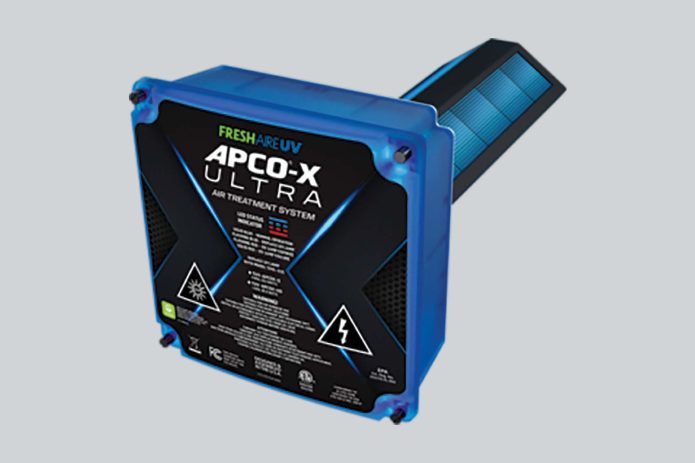Aaron Engel, Vice President of Business Development at Fresh-Aire UV, addresses the critical aspects of indoor air quality (IAQ) and the dangers of indoor pollution, which can be mitigated with smart planning and automation systems.
Why is indoor pollution often more dangerous than outdoor pollution?
The key difference between indoor and outdoor pollution sources is their origin and concentration. Industrial activities, vehicle emissions, and natural sources like pollen, dust, and other allergens influence outdoor pollutants. Indoor pollution is closely tied to occupants, indoor activities, and building materials. Indoor pollutants have higher concentrations and can be more dangerous because they are confined within smaller spaces, and the exposure time is also prolonged. Poor ventilation and limited indoor air quality measures can exacerbate this issue. Additionally, indoor pollutants interact with each other, leading to the formation of new pollutants and increased toxicity.
How does IoT technology impact IAQ monitoring and management?
IoT technology advancements impact IAQ monitoring and management. It provides occupant comfort, health, and productivity while optimising building performance and sustainability. Real-time IAQ monitoring uses sensors to monitor temperature, humidity, CO2, volatile organic compounds (VOCs), and particulate matter. Data analytics uses machine learning to provide insights into factors affecting IAQ and suggest strategies for improvement. They also assist in understanding trends better. IoT sensors monitor IAQ equipment and HVAC performance in real time, seeing possible problems before they become IAQ concerns.
Please discuss filtration systems to optimise indoor air quality while minimising energy consumption.
Filtration systems improve IAQ while reducing energy consumption. Achieving this balance requires careful filtration system selection, installation, and maintenance. Filters are designed to capture airborne particles, and in doing so, static pressure is created, causing the HVAC system to work harder to pull the air through the filter media. Choosing the right filter technology that offers a high capture rate while maintaining a low-pressure drop is important. High-efficiency filters, such as HEPA or high-MERV-rated filters, improve IAQ and, if properly maintained, can have a minimal effect on static pressure. Filters are also effective at maintaining a clean and efficient HVAC system by filtering out particles that would otherwise negatively affect efficiency.
What are the latest innovations and best practices for integrating UV technology for disinfection into HVAC systems?
UVC disinfection enriches HVAC efficiency and performance. It also complements filtration by neutralising airborne microorganisms. HVAC systems are prone to mould and microbial loads that negatively affect IAQ by introducing biologicals and odours into the airstream. It also results in higher static pressure, heat transfer loss, and wear and tear. A fouled coil can exhibit all these issues. When biofilm starts growing within the evaporator coil, which can happen almost immediately after commissioning, the HVAC system must work harder to condition the air. To ensure that the evaporator coil and drain pan do not contribute to poor indoor air quality while also helping to maintain optimal operational efficiency, UVC disinfection of HVAC equipment is a recommended practice. A UVC disinfection system can be sized according to airflow and duct dimensions to deliver high-log airborne biological neutralisation. UVC disinfection can complement filtration to address microorganisms that are so small that they pass through the filter without having any measurable impact on static pressure.

What IAQ technologies address air quality issues, and how do they work?
Various IAQ technologies can be used to address issues ranging from high CO2 levels, poor recirculation, an increase in volatile organic compounds (VOCs), and airborne viruses and bacteria. Each application has different solutions. HEPA filtration and adsorption technologies are probable solutions for addressing higher particulate counts and odours within a facility. Humidification and dehumidification make the environment comfortable or control possible mould issues. UVC disinfection is the ideal solution to help maintain a clean and healthy HVAC system, addressing efficiency-robbing biofilm while disinfecting the air.
Please talk about the technologies that can condition outside air for improved ventilation and air exchange within indoor spaces.
Improving ventilation and air exchange within indoor spaces maintains air quality and guards the health and comfort of occupants. Various technologies are now available to improve the outside air, such as an HRV (heat recovery ventilator) or an ERV (energy recovery ventilator). These systems are designed to recover energy exhausted from a building and are used to condition the outside air. Air filtration systems remove particles from incoming air. UVC disinfection neutralises microorganisms that may be re-introduced into the building or facility. Smart buildings rely on integrated automation systems to monitor different components of the building environment and outside air.
How do filtration technologies mitigate the spread of infectious diseases in indoor environments?
Filtration technologies mitigate the spread of infectious diseases within indoor environments by capturing and removing airborne pathogens such as viruses, bacteria, and other contaminants. High-efficiency filters such as HEPA are 99.97% effective at capturing particles down to 0.3 microns in size. Airborne viruses vary in size and fall within a range of 0.1 to 10 microns, while airborne bacteria are between 0.5 and 10 microns. UVC disinfection effectively neutralises bacteria and viruses on surfaces and the airstream and is a perfect complement to filtration.
What measures can be taken to improve indoor air quality in homes or workplaces?
UVC disinfection, better filtration, and improved ventilation can all impact indoor air quality in homes and buildings. The HVAC system circulates the air and enables the various IAQ technologies to improve the air quality by allowing the fan to work continuously without requiring heat or cooling.
Cookie Consent
We use cookies to personalize your experience. By continuing to visit this website you agree to our Terms & Conditions, Privacy Policy and Cookie Policy.















